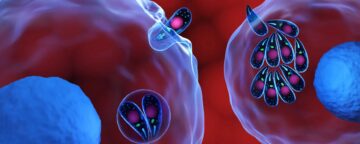Shelby Bradford in The Scientist:
 Parasitic infections pose challenges to creating effective therapies because these microorganisms are eukaryotic, like the humans and animals that they infect. Additionally, species like Toxoplasma gondii live inside cells, making studying them more difficult and adding to the troubles of developing treatments.
Parasitic infections pose challenges to creating effective therapies because these microorganisms are eukaryotic, like the humans and animals that they infect. Additionally, species like Toxoplasma gondii live inside cells, making studying them more difficult and adding to the troubles of developing treatments.
“In order to [discover] better targets, we need to explore in detail the changes that this parasite is inducing in the host cells,” said Gina Gallego-López, a postdoctoral researcher and parasitologist at the Morgridge Institute for Research and University of Wisconsin-Madison. Many of the amino acids and lipids that T. gondii requires for its survival are products of host metabolism, therefore, understanding how the parasite manipulates host metabolic pathways may suggest new strategies for defeating this invader.1
Recently, Gallego-López and her colleagues developed a new approach for studying intracellular infections in which they applied two-photon microscopy to noninvasively measure metabolic changes in T. gondii-infected cells.2 This research, published in mBio, demonstrated that T. gondii altered metabolic activity in human fibroblasts, shedding light on parasite-induced metabolic rewiring.
More here.
Enjoying the content on 3QD? Help keep us going by donating now.
